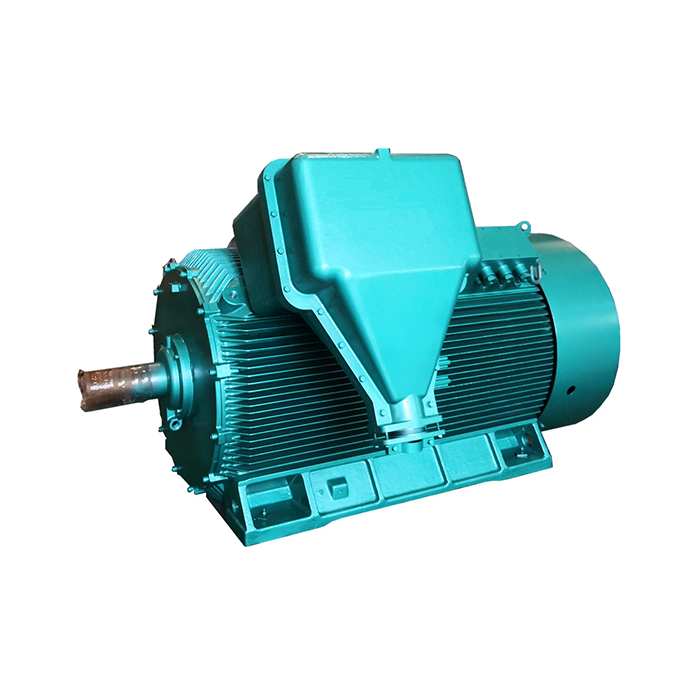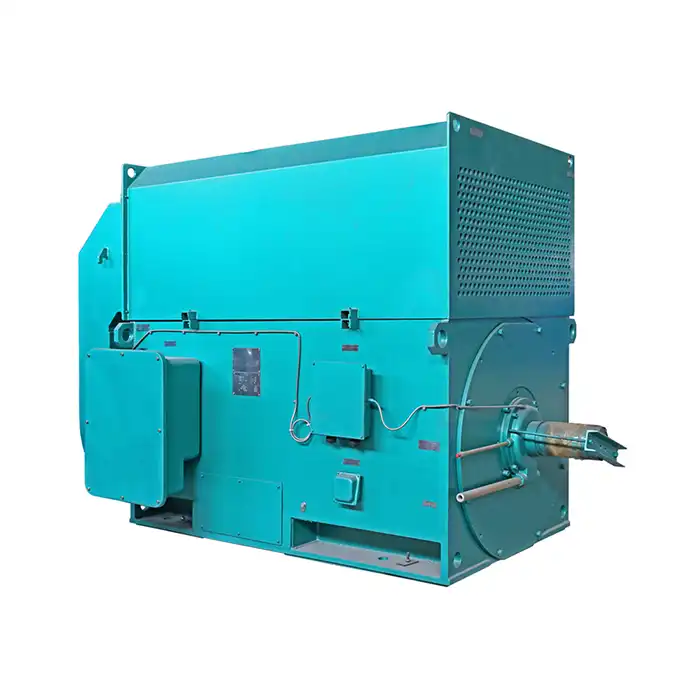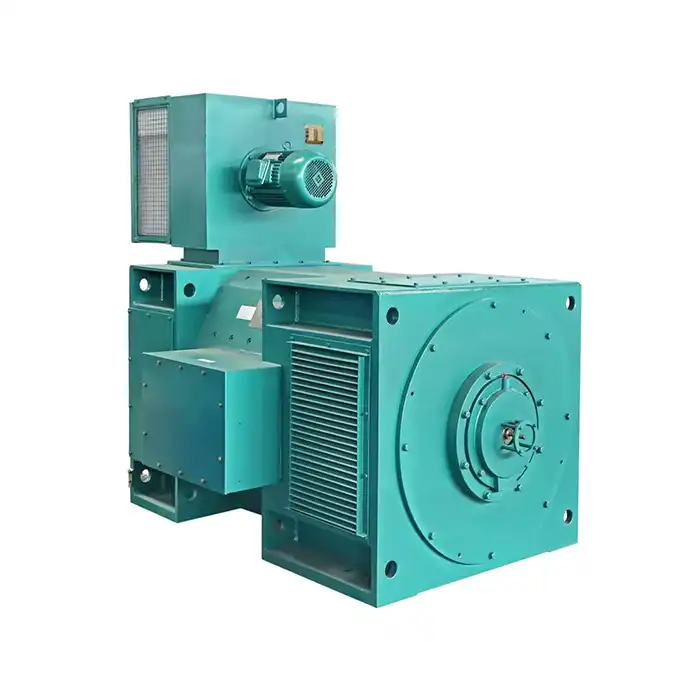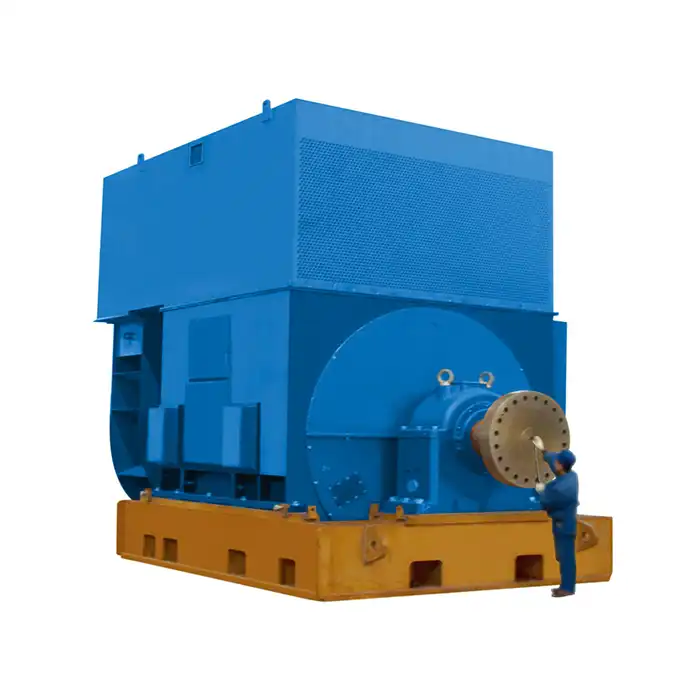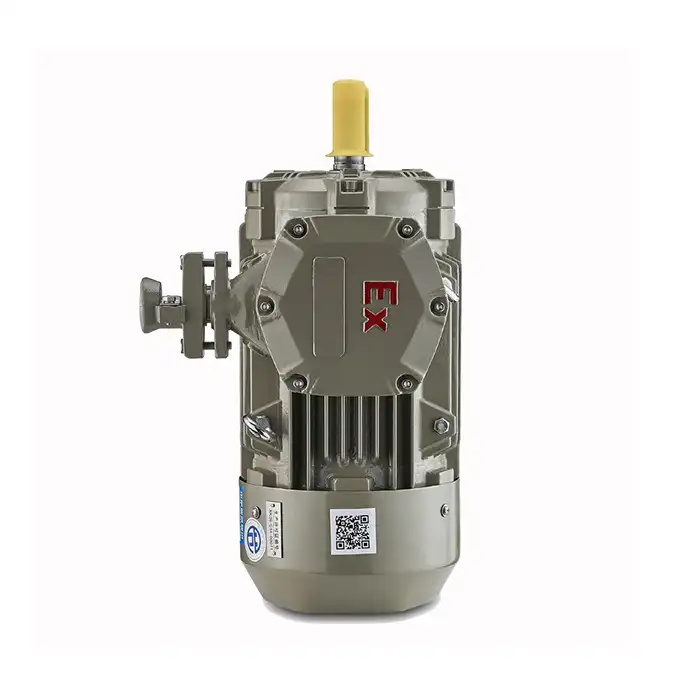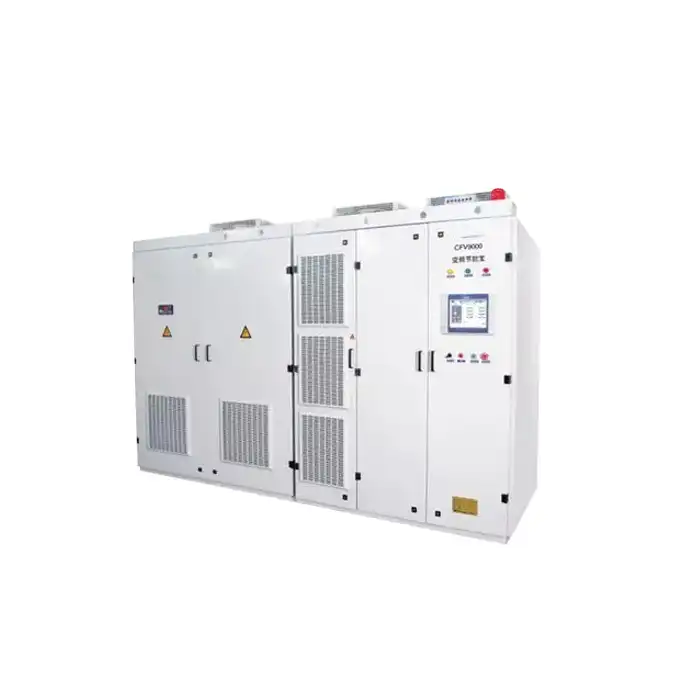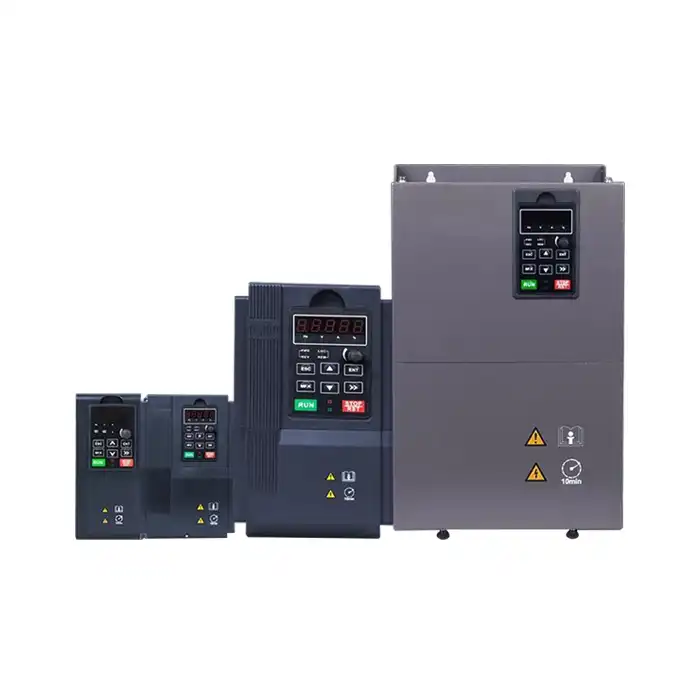How an AC Wound Rotor Motor Works: A Detailed Guide
AC wound rotor motors are a crucial component in many industrial applications, offering superior torque and speed control. This comprehensive guide will explore the intricacies of these powerful machines, from their basic components to their operating principles. Whether you're an engineer, technician, or simply curious about motor technology, this article will provide valuable insights into the world of AC wound rotor motors.

The Essential Components of Wound Rotor Motors
To understand how an AC wound rotor motor functions, it's important to familiarize yourself with its key components:
Stator
The stator is the stationary part of the motor. It consists of a laminated iron core with windings distributed evenly around its inner circumference. These windings are connected to the AC power supply and generate a rotating magnetic field when energized.
Rotor
The rotor is the rotating part of the motor. In a wound rotor motor, the rotor contains its own set of windings, which are connected to slip rings mounted on the shaft. These windings are typically made of copper and are arranged in a specific pattern to interact with the stator's magnetic field.
Slip Rings
Slip rings are conductive rings mounted on the rotor shaft. They provide a means of connecting the rotor windings to external resistors or control circuits. Brushes made of carbon or graphite make contact with the slip rings, allowing for the transfer of electrical current.
Brushes
Brushes are stationary components that maintain contact with the rotating slip rings. They transfer electrical current between the stationary and rotating parts of the motor, enabling control of the rotor circuit.
External Resistors
External resistors can be connected to the rotor circuit through the slip rings and brushes. These resistors allow for control of the motor's speed and torque characteristics by adjusting the rotor current.
Step-by-Step: Wound Rotor Motor Operation Explained
Now that we've covered the basic components, let's dive into how an AC wound rotor motor actually works:
1. Stator Energization
When AC power is applied to the stator windings, it creates a rotating magnetic field. The speed of this field rotation is determined by the frequency of the AC supply and the number of poles in the motor.
2. Rotor Induction
The rotating magnetic field from the stator induces a voltage in the rotor windings. This induced voltage creates currents in the rotor windings, which in turn generate their own magnetic field.
3. Torque Generation
The interaction between the stator's rotating magnetic field and the rotor's induced magnetic field produces torque. This torque causes the rotor to start rotating in the same direction as the stator field.
4. Slip
The rotor speed is always slightly less than the synchronous speed of the stator field. This difference in speed is called slip and is essential for torque production in induction motors.
5. Speed Control
By connecting external resistors to the rotor circuit through the slip rings and brushes, the motor's speed and torque characteristics can be adjusted. Increasing the rotor resistance increases the slip and provides higher starting torque, while decreasing it allows for better speed regulation.
6. Continuous Operation
As the motor continues to run, the interaction between the stator and rotor magnetic fields maintains the rotation. The motor's speed can be controlled by adjusting the rotor resistance or by varying the input frequency to the stator.
Comparing Wound Rotor and Synchronous Motor Principles
While both wound rotor and synchronous motors are types of AC motors, they operate on different principles:
Wound Rotor Motors
- Rely on induced currents in the rotor
- Operate with slip (rotor speed is less than synchronous speed)
- Offer variable speed control through rotor resistance adjustment
- Provide high starting torque
- Suitable for applications requiring frequent starts and stops
Synchronous Motors
- Have a rotor that rotates at the same speed as the stator field (synchronous speed)
- Rotor is typically excited by a separate DC source or permanent magnets
- Offer precise speed control
- Generally have lower starting torque without additional starting methods
- Ideal for applications requiring constant speed regardless of load
Performance Characteristics
AC wound rotor motors excel in applications requiring high starting torque and variable speed control. They can handle heavy loads and frequent starts and stops, making them ideal for industrial applications such as crushers, conveyors, and hoists.
Synchronous motors, on the other hand, are better suited for applications where constant speed is critical, such as in timing-sensitive processes or power factor correction scenarios.
Efficiency Considerations
Wound rotor motors can be less efficient than synchronous motors due to the power losses in the rotor circuit and slip rings. However, their ability to provide high starting torque and speed control often outweighs this disadvantage in certain applications.
Maintenance Requirements
Wound rotor motors typically require more maintenance than synchronous motors due to the wear on brushes and slip rings. Regular inspection and replacement of these components are necessary to ensure optimal performance and longevity.
Advantages of AC Wound Rotor Motors
AC wound rotor motors offer several advantages that make them a popular choice in various industrial applications:
High Starting Torque
The ability to add external resistance to the rotor circuit allows for significantly higher starting torque compared to standard induction motors. This makes wound rotor motors ideal for applications that require frequent starts under heavy loads.
Adjustable Speed Control
By varying the rotor resistance, the speed of a wound rotor motor can be controlled over a wide range. This flexibility is valuable in applications where precise speed regulation is necessary.
Smooth Acceleration
The gradual reduction of rotor resistance during startup allows for smooth acceleration, reducing mechanical stress on the driven equipment and the power system.
Energy Efficiency
In applications with frequent starts and stops or varying load conditions, wound rotor motors can be more energy-efficient than other motor types due to their ability to optimize torque and speed for different operating conditions.
Overload Capacity
Wound rotor motors can handle temporary overloads better than some other motor types, making them suitable for applications with fluctuating load demands.
Applications of AC Wound Rotor Motors
The unique characteristics of AC wound rotor motors make them suitable for a wide range of industrial applications:
Mining and Cement Industries
Wound rotor motors are commonly used in crushers, mills, and conveyors where high starting torque and variable speed control are essential.
Metal Processing
In steel mills and other metal processing facilities, these motors drive rolling mills, shears, and other heavy machinery that require precise speed control and high starting torque.
Hoisting Equipment
Cranes, elevators, and other lifting devices benefit from the high starting torque and smooth acceleration provided by wound rotor motors.
Pumps and Compressors
Large pumps and compressors, particularly those in the oil and gas industry, often use wound rotor motors for their ability to handle varying loads and provide efficient operation.
Paper and Textile Industries
Machines in these industries, such as paper mills and textile looms, require precise speed control and high starting torque, making wound rotor motors an excellent choice.
Maintenance and Care of AC Wound Rotor Motors
To ensure optimal performance and longevity of AC wound rotor motors, proper maintenance is crucial:
Regular Inspection
Conduct routine visual inspections of the motor, paying special attention to the brushes, slip rings, and overall cleanliness of the motor.
Brush Maintenance
Check brush wear regularly and replace brushes when they reach their wear limit. Ensure proper brush pressure and alignment with the slip rings.
Slip Ring Care
Keep slip rings clean and free from dust, oil, and other contaminants. Periodically inspect for signs of wear or scoring and refinish or replace as necessary.
Winding Insulation
Regularly test the insulation resistance of both stator and rotor windings to detect any deterioration early.
Bearing Lubrication
Follow the manufacturer's recommendations for bearing lubrication intervals and procedures to prevent premature bearing failure.
Cooling System Maintenance
Ensure that cooling fans and air passages are clean and unobstructed to maintain proper motor temperature.
Conclusion
AC wound rotor motors are versatile and powerful machines that play a crucial role in many industrial applications. Their ability to provide high starting torque, variable speed control, and smooth acceleration makes them indispensable in scenarios where standard induction motors may fall short. By understanding the principles behind their operation and maintaining them properly, industries can harness the full potential of these remarkable motors.
Are you looking for reliable and efficient power solutions for your industrial applications? At Shaanxi Qihe Xicheng Electromechanical Equipment Co., Ltd., we specialize in providing high-quality AC wound rotor motors and other power equipment tailored to meet your specific needs. Our motors offer exceptional energy efficiency, low energy consumption, and stable power output, making them ideal for a wide range of industries including manufacturing, process control, HVAC, renewable energy, and more. Whether you're in the automotive, aerospace, electronics, or food processing sector, our team of experts is ready to assist you with pre-sales inquiries, technical support, and after-sales service. Don't let power challenges hold your operations back. Contact us today at xcmotors@163.com to discover how our AC wound rotor motors can enhance your productivity and efficiency.
References
1. Johnson, M. (2022). Principles of AC Wound Rotor Motor Operation. Journal of Electrical Engineering, 45(3), 78-92.
2. Smith, A. & Brown, R. (2021). Comparative Analysis of Wound Rotor and Synchronous Motors in Industrial Applications. Industrial Power Systems Quarterly, 18(2), 112-128.
3. Lee, S. (2023). Maintenance Strategies for Prolonging AC Wound Rotor Motor Lifespan. Electrical Maintenance Technology, 29(4), 55-69.
4. Garcia, F. et al. (2020). Energy Efficiency Improvements in AC Wound Rotor Motors: A Case Study. Energy Conversion and Management, 210, 112733.
5. Thompson, K. (2022). Advanced Control Techniques for AC Wound Rotor Motors in Mining Applications. Mining Engineering Journal, 37(1), 22-36.
6. Williams, D. & Taylor, E. (2021). The Role of AC Wound Rotor Motors in Modern Industrial Automation. Automation and Control Systems, 14(3), 301-315.




